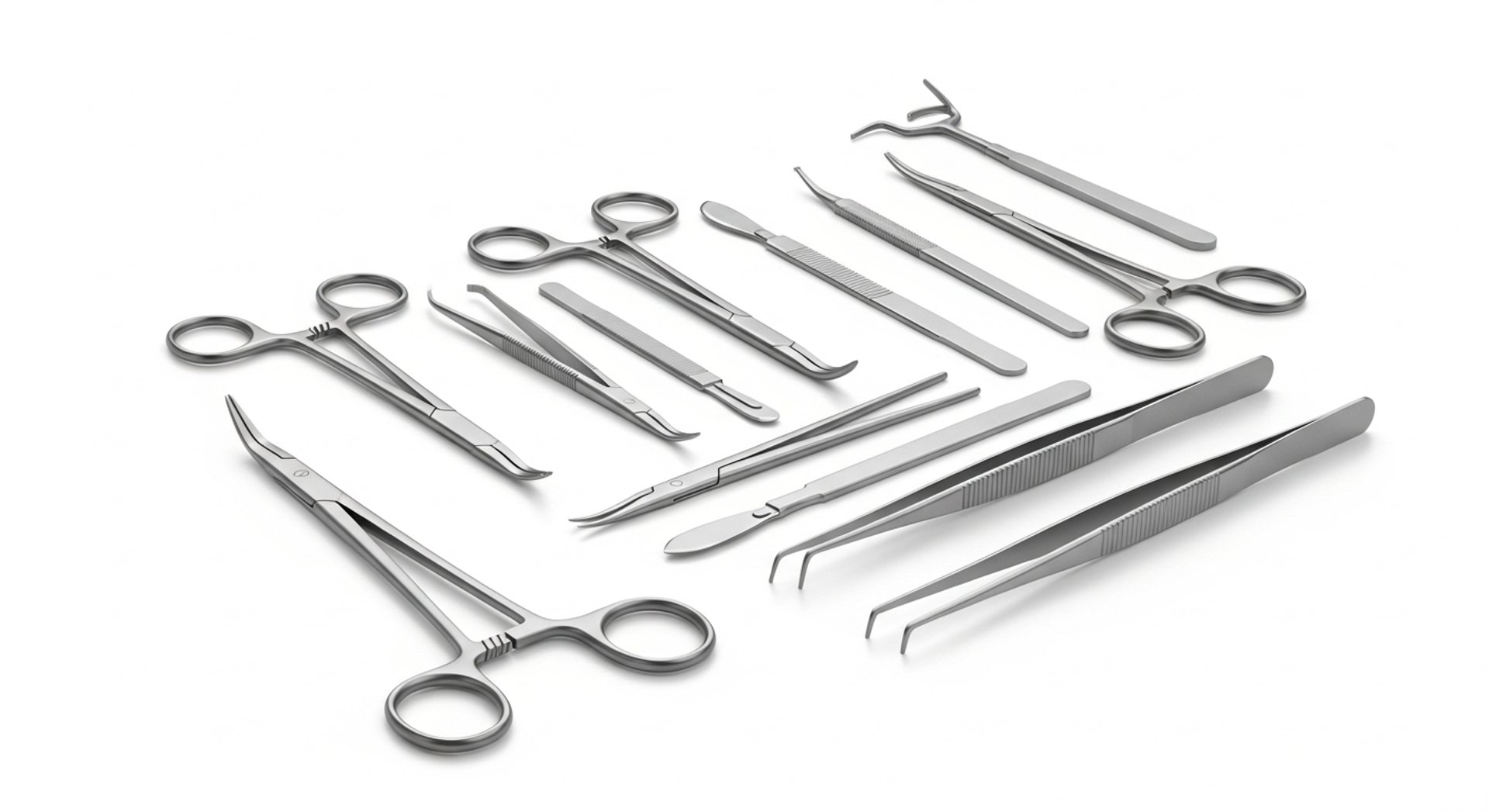
Stainless Steel Used
Zestlet Surgical Instruments | Stainless Steel
Stainless Steel in Medical Instruments – Zestlet Surgical
Stainless steel is a versatile group of iron-based alloys renowned for their exceptional resistance to rust and corrosion, primarily due to their chromium content. The addition of chromium to steel dates back to the 19th century, but it wasn’t until the early 20th century that researchers discovered steel with over 10% chromium and low carbon content became effectively rustproof. The term "stainless" was first coined in 1916 for steel cutlery produced in Sheffield, England. By 1913, 316L stainless steel was patented, and in 1926, an 18% chromium and 8% nickel alloy was developed. However, this alloy still faced corrosion issues until the introduction of 2-4% molybdenum, which significantly improved its durability.
Is Stainless Steel Magnetic?
The magnetic properties of stainless steel depend on its composition and crystal structure. While all stainless steels contain iron, not all are magnetic. For stainless steel to be magnetic, it must:
Contain iron.
Have a martensitic or ferritic crystal structure.
Austenitic stainless steels (e.g., 300 series) are generally non-magnetic, whereas martensitic steels (e.g., 400 series) are magnetic.
Stainless Steel in Surgical Instruments
Modern surgical instruments are crafted from various materials, including titanium, plastics, composites, and stainless steel. At Zestlet Surgical, we primarily use two stainless steel series for instrument manufacturing:
300 Series (Austenitic Stainless Steel – e.g., Grade 304)
Contains 18% chromium and 8% nickel (18/8).
Non-magnetic due to its austenitic structure.
Cannot be hardened via heat treatment but offers excellent malleability.
Ideal for instruments requiring shaping without breakage, such as cannulas, retractors, probes, and spreaders.
400 Series (Martensitic Stainless Steel – e.g., Grades 410/420)
Magnetic due to its ferritic/martensitic structure.
Can be hardened and tempered for superior strength.
Preferred for instruments requiring sharp, durable edges, such as bone cutters, forceps, needle holders, and chisels.
Key Factors in Stainless Steel Performance
Carbon Content – Higher carbon allows for hardening, essential for cutting instruments.
Chromium & Nickel – Enhance corrosion resistance and provide a polished finish.
Passivation Process – A nitric acid treatment that removes impurities and enhances corrosion resistance. This must be performed by trained technicians to ensure effectiveness.
Corrosion Resistance & Maintenance
While stainless steel is highly corrosion-resistant, improper care can lead to rust. Factors contributing to corrosion include:
Exposure to highly acidic or alkaline detergents.
Contact with non-corrosion-resistant metals.
Chloride-rich environments or poor passivation.
At Zestlet Surgical, we ensure quality through:
Copper Sulfate Testing – Detects improper material selection or passivation failures.
Proper Sterilization & Handling – Preventing moisture exposure (especially for martensitic steels).
Conclusion
Stainless steel remains a cornerstone of surgical instrument manufacturing due to its durability, corrosion resistance, and versatility. By selecting the right alloy (300 vs. 400 series) and ensuring proper passivation and maintenance, Zestlet Surgical delivers high-quality, long-lasting instruments that meet the rigorous demands of modern healthcare.
For premium surgical instruments built to last, trust Zestlet Surgical – where precision meets excellence.
Manufacturer & Exporter of
Dental and Surgical Instruments, Beauty Instruments, Diagnostic Devices, Hollowware and Hospital Furniture
Precision
Email:sales@zestletsurgical.com
Phone: +923294372020
© 2025. All rights reserved.
| Corporate
| Commitment
| Sustainability
| Production
| Contact US
Address: Chowk, opp. ZestletSurgical Factory, Kotli Behram, Sialkot, Punjab 51310
